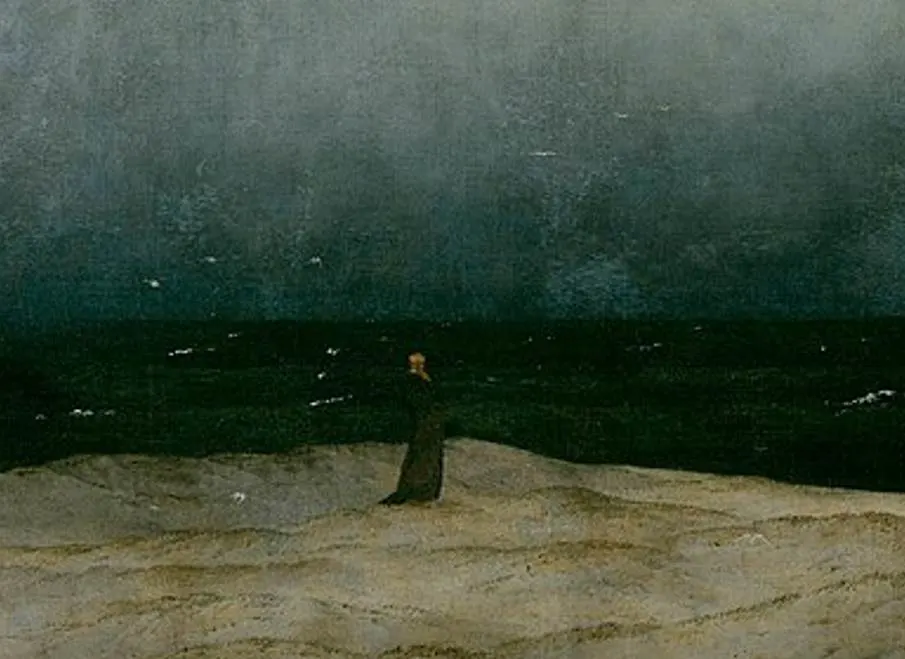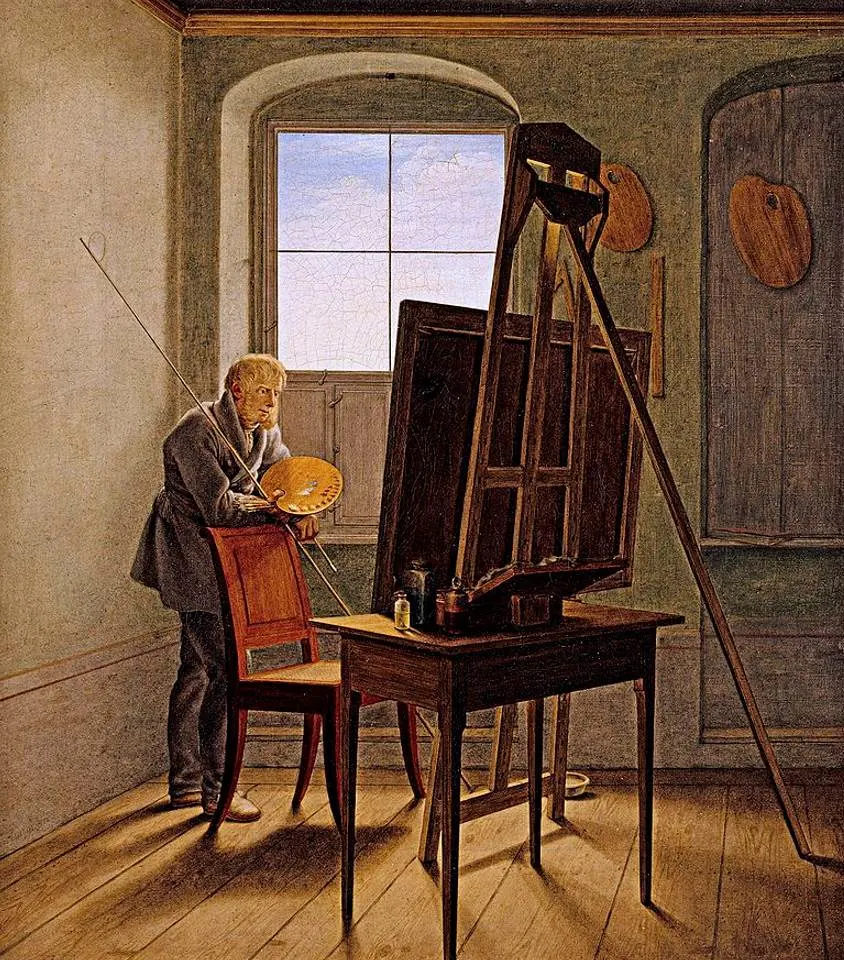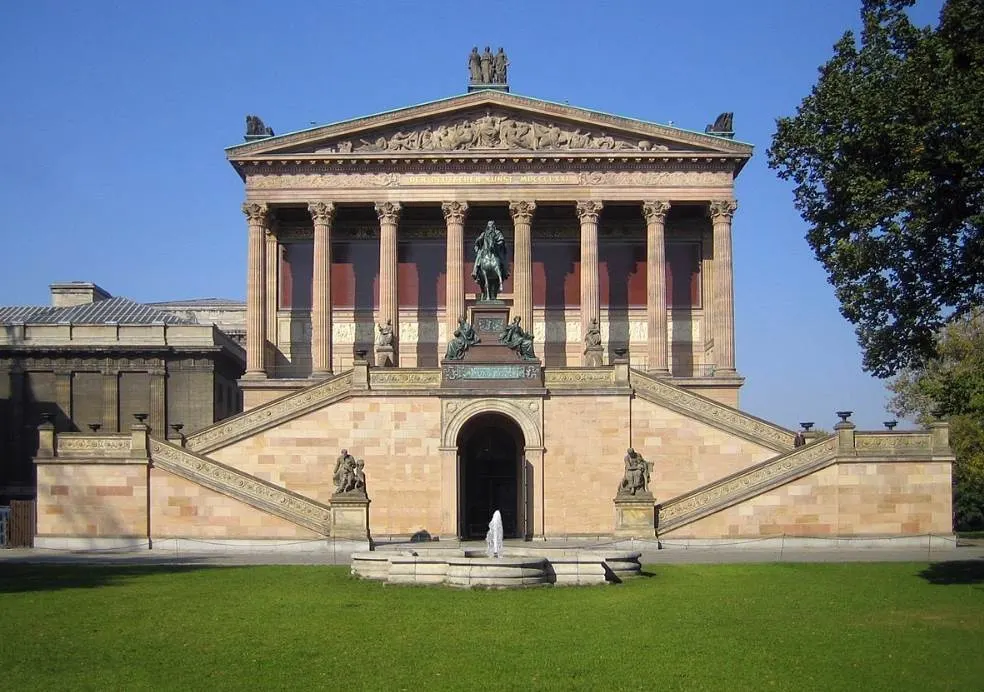When a renowned German artist produced a painting that lacks any form of depth, it caused a wave of controversy.
Regardless of this peculiar fact, it became one of the best-recognized works in the oeuvre of Caspar David Friedrich (1774-1840), the leading Romantic artist in Germany in the 19th century.
Below, you’ll discover some of the most interesting facts about The Monk by the Sea by Friedrich, a Romantic painting with a remarkable story to tell.
1. It was completed shortly after Friedrich achieved his artistic breakthrough
Caspar David Friedrich was born in the city of Greifswald on the Baltic Coast of Germany. Although he is considered to be a German artist, this part of Europe was part of Swedish Pomerania at the time.
He initially studied art at the prestigious Academy of Copenhagen and permanently settled in the German city of Dresden in 1798.
What’s remarkable about Friedrich is that he didn’t produce oil paintings during this period in his career. He experimented with a lot of other types of art though, including watercolors, etchings, prints, and woodcuts.
His first major commission was an altarpiece titled “Cross in the Mountains” in 1808. In this work, he integrated a cross into the type of landscape that made him famous, the first of its kind in Christian art.
He completed The Monk by the Sea in Dresden between 1808 and 1810. This was shortly after he achieved what can be considered his artistic breakthrough.

2. It depicts a monk standing on a low dune in front of the ocean
The painting depicts a gloomy sky with a small dune in the foreground. In this area, we can see a figure dressed in what is considered to be a monk’s garment.

apart from this figure and some whitecaps popping up from waves in the ocean, nothing more can be distinguished.
The small dune may be, in fact, a rock that is part of the Cliffs of Rügen, a small island just north of Freidrich’s native city.
It’s, however, impossible to confirm this for sure because the artist didn’t include any detailed clues. There was, however, a chapel in this area, constructed by a mystic to help poor fishermen.

3. There’s a good reason why the artist painted the monk so small
Some art historians have suggested that the figure is a self-portrait by the artist. The long blond hair and the fact that he has painted himself as a monk later on in his career might hint at that.
Because the figure is turned with his back to the viewer, we can impossibly identify him except for the vague description that it’s a monk.
The monk is also very small for such a large composition. The idea behind this composition is that it emphasizes the vastness of nature as the monk contemplates it.
Caspar David Friedrich became famous for depicting figures in a contemplative position in nature. His best-known work is “Wanderer above the Sea Fog” (1818) which he completed less than a decade later.

4. Freidrich changed multiple elements after the first draft was completed
One of the most fascinating facts about Caspar David Friedrich is that despite he was one of the leading landscape artists of his time, he never painted “en Plein Air” (outdoors).
Instead, he produced drawings during the copious amounts of trips he did and then completed the oil paintings in his studio.
He was somewhat of a perfectionist because research has shown that he made several changes to the composition as time went by.
This was his normal modus operandi as he put all pieces of his drawings together into a single composition.
The Monk by the Sea initially featured two small boats on the horizon but he removed those after on. he also added the moon and stars to the sky at a later time.

5. The painting was exhibited in 1810 together with an accompanying work
Friedrich never really earned major commissions until he completed Cross in the Mountains in 1808, a painting also known as the “Tetschen Altar.”
Driven by this success, he started working on both The Monk by the Sea and an accompanying painting titled “The Abbey in the Oakwood” (1808-1810).
This painting depicts the ruins of Eldena Abbey which was situated near the artist’s hometown of Greifswald. He completed this painting in Dresden based on drawings he made during one of his many visits there.
Both paintings were exhibited for the first time together in the Berlin Academy exhibition of 1810. at the request of Friedrich, The Abbey in the Oakwood was hung below The Monk by the Sea during this event.

6. The painting was heavily criticized by contemporary art critics
The painting of the lonesome monk standing in front of a gloomy sky and ocean didn’t manage to win many hearts at the exhibition.
People found it dull and uninspirational and art critics heavily criticized the lack of depth in the work. This makes it uninviting and doesn’t allow the viewer to engage with the painting.
In an attempt to try to understand the painting for what it is, a work of art that contemplates life and death, another critic named Heinrich von Kleist (who was also Friedrich’s friend) wrote this:
How wonderful it is to sit completely alone by the sea under an overcast sky, gazing out over the endless expanse of water. It is essential that one has come there just for this reason, and that one has to return.
7. How big is The Monk by the Sea by Caspar David Friedrich?
To stress the vastness of the ocean and sky in front of the monk, Freidrich had to produce a relatively large picture.
Both accompanying The Abbey in the Oakwood and The Monk by the Sea by Caspar David Friedrich are oil on canvas paintings that have dimensions of 110 × 171.5 centimeters (43 × 67.5 inches).

8. Where is the painting located today?
Even though the painting attracted a lot of negative criticism, they did attract attention at the highest level of Prussian society.
Frederick Wilhelm III, King of Prussia, acquired the paintings shortly after the exhibition and they became part of the king’s collection.
This sale not only resulted in financial freedom for the emerging artist but also solidified his growing reputation during the second decade of the 19th century.
The two adjoining paintings never left Germany and today, they can be admired at the Alte Nationalgalerie.
This is a museum dedicated to 19th-century paintings and sculptures on Berlin’s Museum Island.

